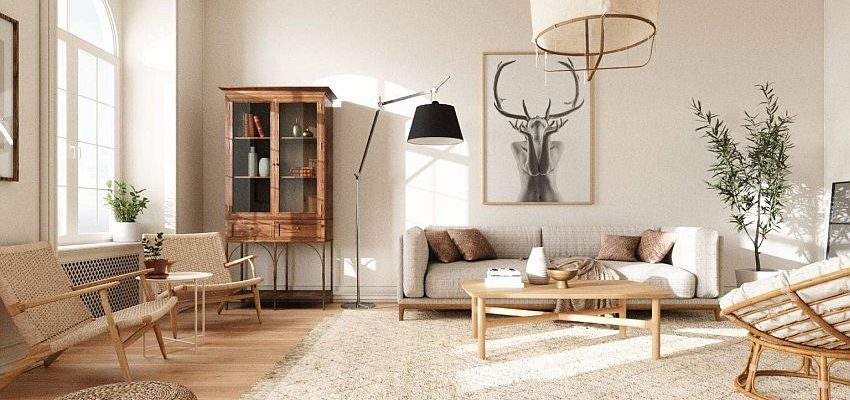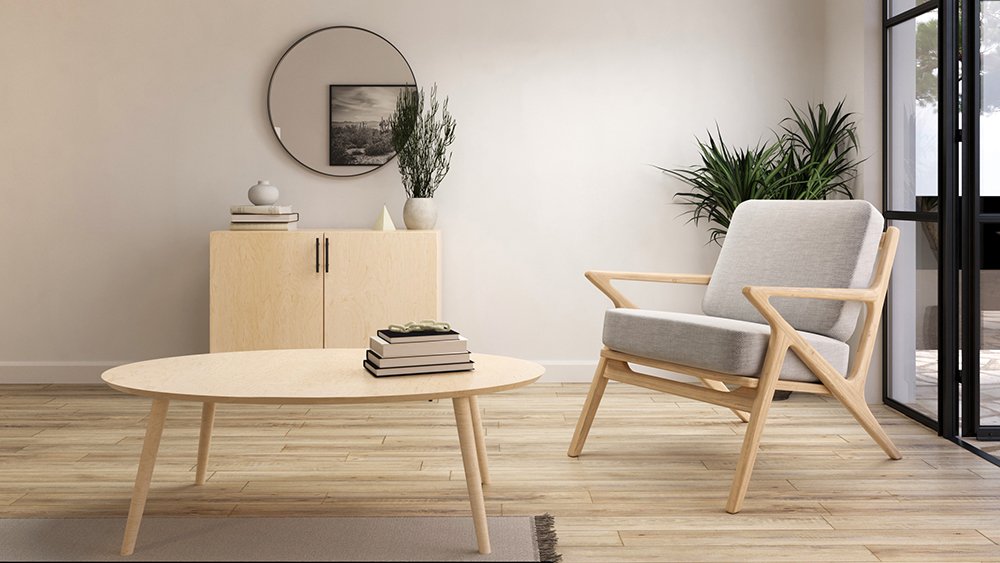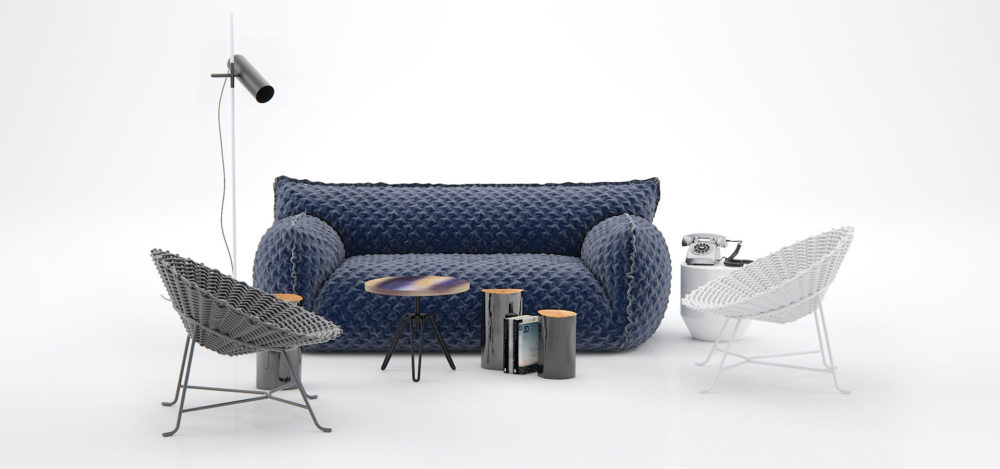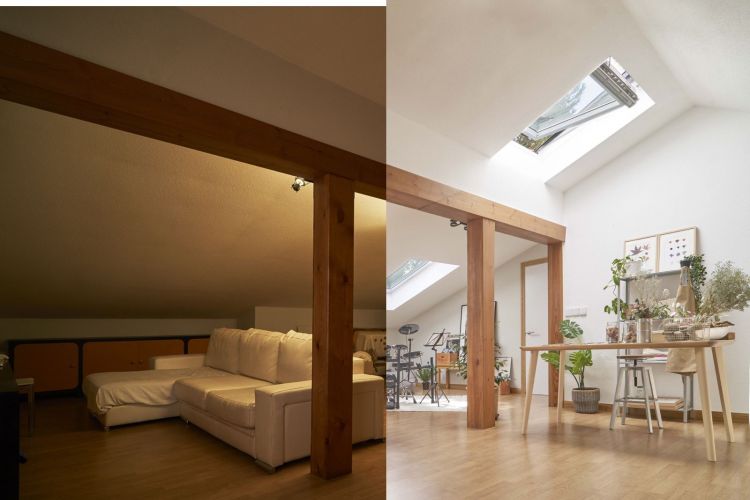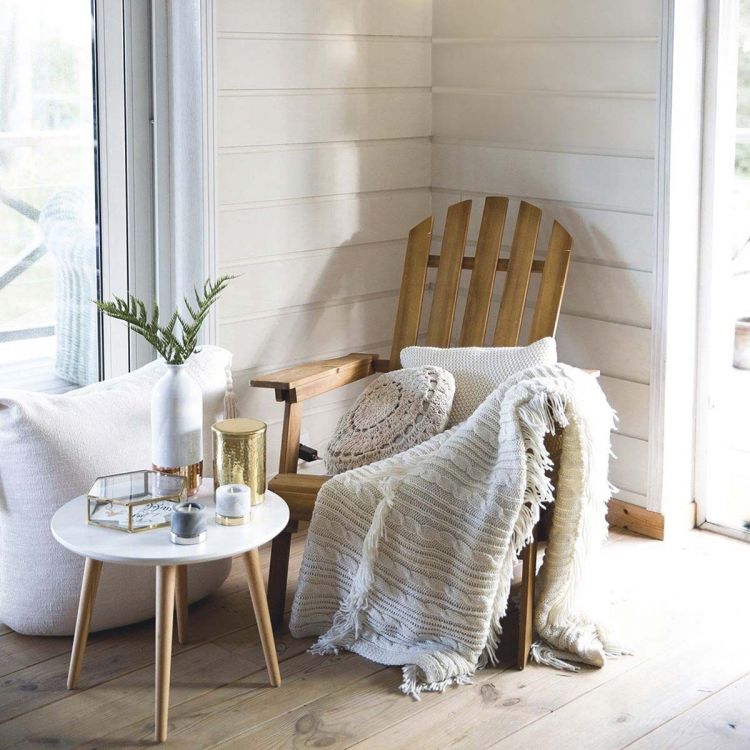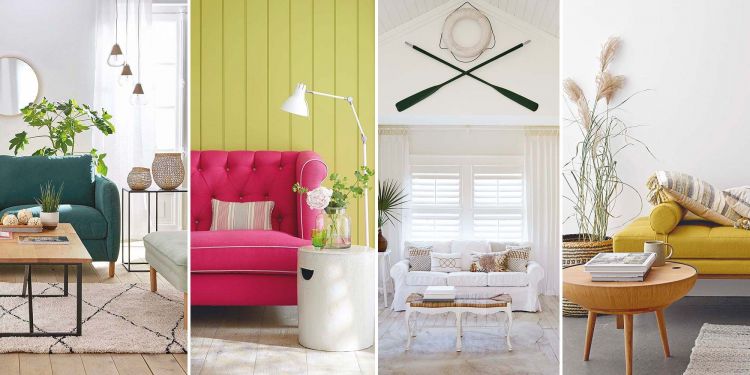In the world of Japanese cinema, minimalism stands as an art form. From the serene interiors of traditional homes to the modern, uncluttered spaces of contemporary settings, Japanese filmmakers have masterfully captured the essence of minimalism on screen. The beauty of this cinematic minimalism lies not only in its visual allure but also in the sense of serenity it imparts. It’s a philosophy that invites us to strip away the excess, find beauty in simplicity, and create spaces that foster tranquility. In this article, we embark on a journey inspired by the minimalist aesthetics found in Japanese cinema.
The Essence of Minimalism in Japanese Cinema

Japanese cinema has a unique ability to encapsulate the very essence of minimalism. If you haven’t watched Japanese films with English subtitles yet, we advise you to definitely start and enjoy the magnificent stylistic solutions. Rooted in cultural and aesthetic traditions that extol simplicity, the portrayal of minimalist interiors in Japanese films is more than just set design; it’s an art form in itself. Minimalism in this context extends far beyond the mere absence of clutter; it’s a philosophy, a way of life, and a visual journey into the heart of tranquility.
- Cultural Connection: The minimalistic approach in Japanese cinema is deeply ingrained in the nation’s culture. It draws inspiration from Zen Buddhism, which advocates simplicity, the elimination of the unnecessary, and an appreciation of the present moment. These principles find their way into both narrative and aesthetics, shaping the very fabric of Japanese films.
- Visual Aesthetics: A hallmark of Japanese minimalism is its profound connection to nature. This is evident in films where the beauty of the surrounding landscape is seamlessly integrated with interior spaces. The use of large windows and open spaces allows nature to become a part of the decor, exemplifying a harmonious coexistence between the inside and the outside.
- Embracing Silence: Silence and pauses play a pivotal role in minimalist Japanese cinema. This aspect is mirrored in the film’s interior design. Minimalist spaces are quiet, allowing viewers to focus on the visual cues and emotions conveyed by the characters. The absence of excessive decor and noise creates a serene environment for both the on-screen story and the viewer.
- Notable Examples: Japanese filmmakers have skillfully captured minimalism in various contexts. From the traditional beauty of a tea ceremony room in “The Twilight Samurai” to the contemporary simplicity of an urban apartment in “Tokyo Sonata,” these films provide a masterclass in how minimalist interiors can be both elegant and evocative.
By understanding the roots of minimalism in Japanese cinema, we can begin to unravel the secrets of creating interiors that exude tranquility, simplicity, and a profound connection to nature. The journey to transform your living space into a haven of serenity starts here, with the wisdom of Japanese minimalism as our guide.
Benefits of Minimalist Interior Decor
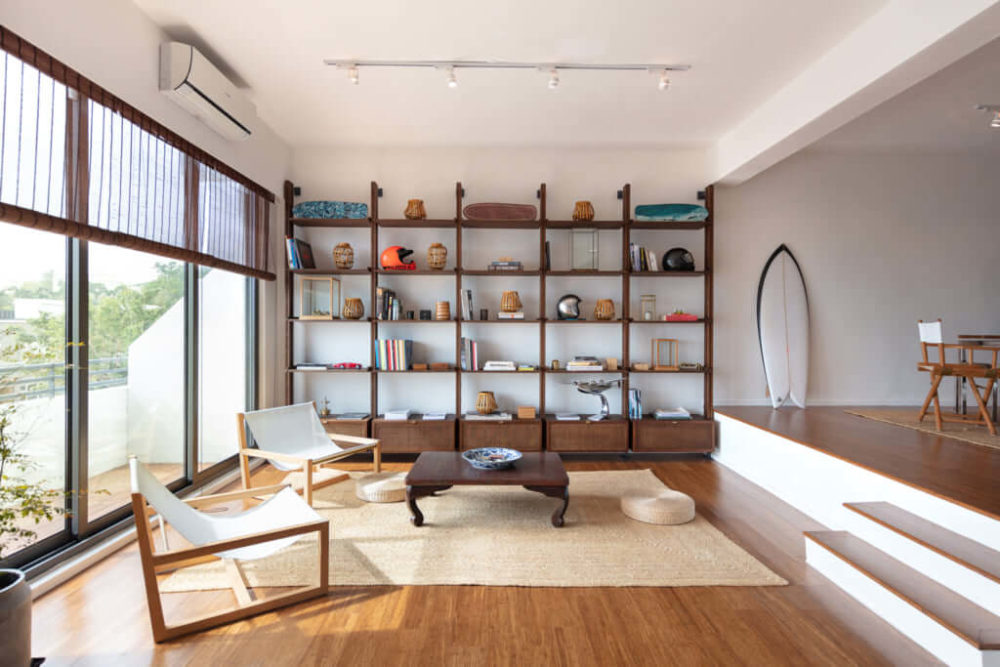
The allure of minimalist interior decor is not merely a visual fascination; it’s a lifestyle choice that can transform your living space in profound ways. As we delve into the world of Japanese cinema-inspired minimalism, it’s essential to understand the practical benefits that come with this design philosophy. By adopting a minimalist approach, you open the door to a plethora of advantages that extend beyond aesthetics, creating a serene and harmonious atmosphere in your home.
- Enhanced Serenity: The cornerstone of minimalist decor is its ability to create a serene environment. By eliminating clutter and excess, you strip away distractions, allowing your living space to become a haven of tranquility. In Japanese cinema, these serene settings often serve as backdrops to deeply emotional and contemplative scenes, emphasizing the connection between minimalism and inner peace.
- Stress Reduction: A clutter-free environment can significantly reduce stress. The act of decluttering and simplifying your surroundings can be therapeutic in itself. The absence of visual noise and chaos in your decor promotes a sense of calm, which can have a positive impact on your mental well-being.
- Increased Focus: Minimalist interiors encourage mindfulness by providing an environment free from visual distractions. This heightened focus can lead to increased productivity, improved concentration, and a greater ability to be present in the moment.
- Ease of Maintenance: Minimalist decor is inherently easier to maintain. With fewer items to clean and organize, you can streamline your daily routine and devote more time to activities you enjoy. This reduction in upkeep not only saves time but also contributes to a stress-free lifestyle.
- Space Optimization: Minimalism is especially beneficial in smaller living spaces. By maximizing the use of available space and keeping it uncluttered, you can make even the tiniest of rooms feel more spacious and inviting.
- Eco-Friendly Choices: Minimalism often aligns with sustainability. By reducing the quantity of possessions and choosing high-quality, long-lasting items, you can make eco-conscious choices in your interior decor. This not only benefits the environment but also promotes a sense of responsibility and ethical living.
As we embark on our journey to infuse Japanese cinema-inspired minimalism into your home decor, remember that it’s not just about creating beautiful spaces; it’s about transforming your way of life. By embracing the benefits of minimalism, you can cultivate a living environment that promotes serenity, reduces stress, and allows you to live more mindfully. The path to a more harmonious and peaceful home begins with the conscious choice to declutter and simplify your living space.
Decluttering Your Space
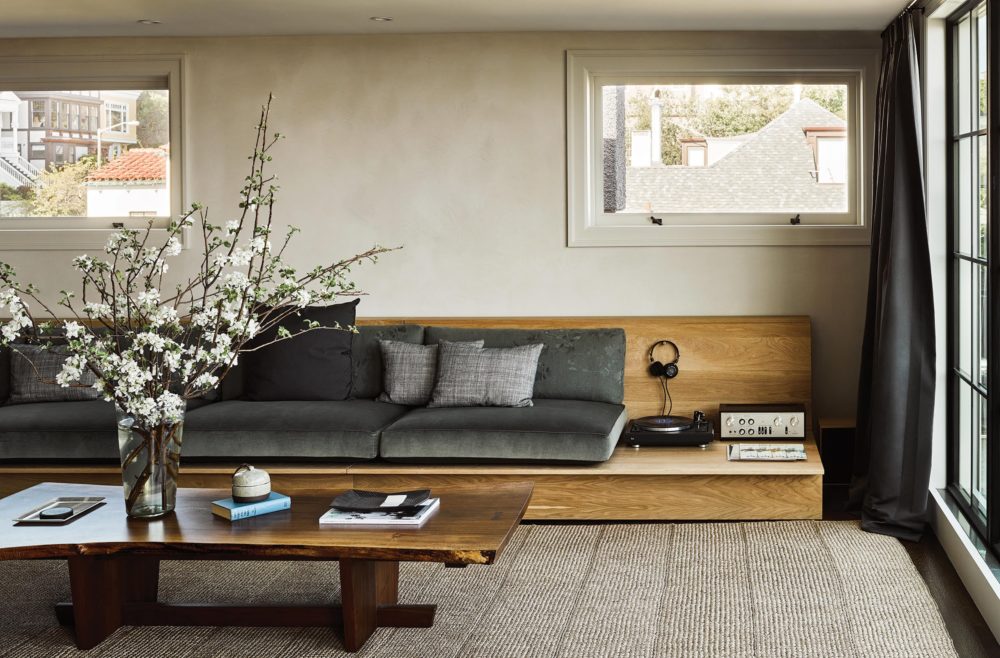
Embracing minimalist interior decor inspired by Japanese cinema begins with the essential step of decluttering your living space. This process involves purging unnecessary items, reorganizing your belongings, and creating a harmonious and serene atmosphere. Here, we’ll guide you through the art of decluttering, making it manageable and sustainable, and help you create a canvas for your minimalist design.
- Assessment and Prioritization: Start by assessing your living space. Identify areas that need attention and prioritize them. Tackle one room or area at a time to avoid feeling overwhelmed. Ask yourself what items are essential, what can be donated, and what should be discarded.
- The KonMari Method: Made famous by Marie Kondo, the KonMari method encourages you to keep only those items that “spark joy.” This philosophy encourages a more intentional approach to decluttering and retaining only the possessions that bring happiness and meaning to your life.
- Storage Solutions: Investing in proper storage solutions is essential for maintaining a clutter-free space. Consider using storage bins, shelves, and other organizing tools to keep your belongings in order. Japanese design often incorporates hidden storage to maintain a clean and uncluttered appearance.
- One In, One Out Rule: To prevent clutter from accumulating again, establish a “one in, one out” rule. For every new item you bring into your home, one existing item must be removed. This ensures that your living space remains streamlined.
- Digital Declutter: Don’t forget to declutter your digital life as well. Organize your files, emails, and digital photos, and unsubscribe from unnecessary subscriptions. A clean digital environment can contribute to a sense of calm.
- Sustainability: Consider the environmental impact of your decluttering efforts. Donate or recycle items when possible, rather than sending them to landfills. Encourage a culture of recycling and reuse within your home.
- Maintenance: Decluttering is an ongoing process. Make it a habit to regularly assess your living space and remove items that are no longer essential or meaningful. This will help you maintain a clutter-free and peaceful environment.
Decluttering your space is the foundation of minimalist interior decor. It allows you to create a canvas on which you can build a serene and harmonious living environment. By following these decluttering principles, you’ll pave the way for the minimalist transformation of your home, inspired by the wisdom of Japanese cinema.
Minimalist Color Palettes and Materials
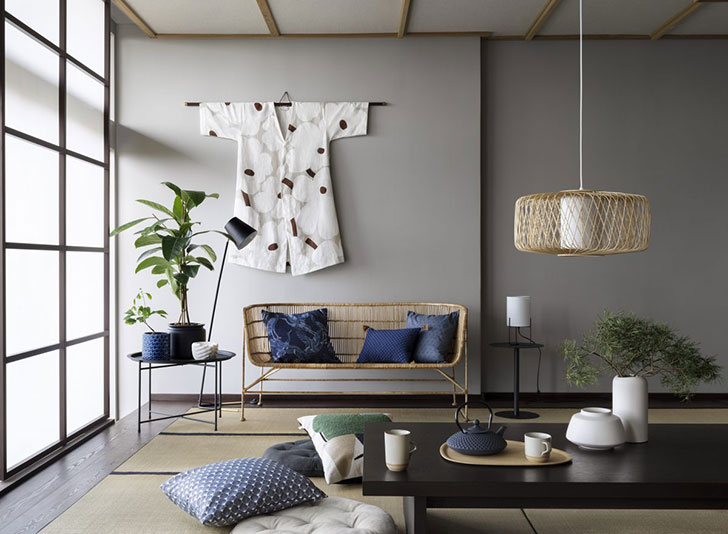
In the world of minimalist interior decor inspired by Japanese cinema, color palettes and materials play a pivotal role in shaping the atmosphere of a space. The choice of colors and materials not only defines the aesthetics but also contributes to the overall sense of serenity and simplicity that is characteristic of Japanese minimalism.
- Neutral Color Schemes: Japanese minimalism often embraces a neutral color palette. Colors like whites, grays, and earthy tones create a clean and unobtrusive backdrop for your decor. These hues not only evoke a sense of calm but also allow other design elements to shine.
- Natural Materials: The use of natural materials is a key aspect of minimalist design. Incorporating wood, stone, and bamboo into your interior decor provides a connection to nature. In Japanese cinema, these materials are often featured prominently, offering warmth and a sense of authenticity to the surroundings.
- Functional Contrast: To add depth to a minimalist space, consider subtle contrasts in texture and material. For example, mixing smooth, minimalist furniture with rough-textured rugs or cushions can create visual interest without overwhelming the decor.
- Incorporating Minimalist Art: Japanese minimalism often includes the use of artwork with clean lines and subtle colors. These pieces add a touch of elegance and can serve as focal points in your decor. Consider the incorporation of Japanese art forms like ink paintings or calligraphy for a touch of cultural authenticity.
- Decluttered Walls: Minimalism in Japanese cinema extends to the walls. Avoid excessive wall decor and opt for simple, unadorned walls. This can contribute to the feeling of spaciousness and simplicity within the room.
- Maximizing Natural Light: To fully embrace the minimalistic ethos, take advantage of natural light. Japanese films often utilize the interplay of light and shadow, and large windows allow the outside world to become part of the interior. Choose window coverings that are simple and allow for the passage of natural light.
- Soft Accents: While minimalism often features a restrained color palette, soft accents of color can be added through small decor items like throw pillows, vases, or art pieces. These accents can provide a touch of personality without compromising the overall minimalist aesthetic.
By carefully selecting a neutral color scheme and incorporating natural materials, you can create a minimalist environment inspired by Japanese cinema that radiates calm and tranquility. These design choices not only infuse your space with an authentic sense of serenity but also offer a reflection of nature’s beauty, making it an integral part of your decor. In the next section, we’ll delve into the specific furniture and decor choices that can further enhance your minimalist interior.
Furniture and Decor Choices

The selection of furniture and decor items is where the essence of minimalist interior decor takes center stage. In Japanese cinema-inspired minimalism, the choice of furniture and decor should harmonize with the overall design philosophy, emphasizing simplicity, functionality, and a sense of serenity. Here are some key considerations and choices to make when furnishing your minimalist living space:
- Low-Profile Furniture: Opt for low-profile furniture pieces that are closer to the ground. This design choice not only maximizes the sense of space but also reflects the traditional Japanese practice of sitting close to the floor. Low coffee tables, platform beds, and seating with clean lines are excellent options.
- Multifunctional Furniture: Embrace the concept of multifunctional furniture. In small spaces, pieces that serve multiple purposes are invaluable. Consider sofa beds, storage ottomans, or dining tables that can be extended or folded when needed.
- Open Shelving: Open shelving units can be used for both storage and as display areas for decorative items or minimalist decor. Keep the shelves uncluttered, featuring a carefully curated selection of items that add personality to the space.
- Minimalist Lighting: Lighting plays a significant role in minimalist design. Choose simple and elegant lighting fixtures that blend seamlessly with the decor. Pendant lights with clean lines, floor lamps with slender profiles, and wall sconces can provide soft, ambient illumination.
- Minimalist Decor Items: When selecting decor items, focus on quality over quantity. Incorporate minimalist elements like bonsai trees, ikebana flower arrangements, or simple ceramics. These items should add a touch of elegance and authenticity to your decor without overwhelming the space.
- Floor Seating: Consider incorporating floor seating options, such as tatami mats with zafu cushions or low-slung chairs and cushions. These elements reflect the Japanese tradition of floor seating and add a sense of informality to the space.
- Japanese Sliding Doors (Shoji): If you have the opportunity, Japanese sliding doors or shoji screens can be a beautiful addition to your decor. They not only serve as functional room dividers but also add a touch of authenticity to your minimalist interior.
- Minimalist Textiles: When selecting textiles for your decor, choose simple, natural fabrics like linen or cotton. Textiles can be used for cushions, curtains, or as accents, adding softness and comfort to the minimalist space.
By carefully choosing furniture and decor items that align with the minimalist philosophy inspired by Japanese cinema, you can create an environment that is both aesthetically pleasing and functional. Remember that each piece you select should serve a purpose and contribute to the overall sense of serenity and simplicity within your living space. In the next section, we’ll explore ways to maximize functionality in a minimalist interior.
Maximizing Functionality
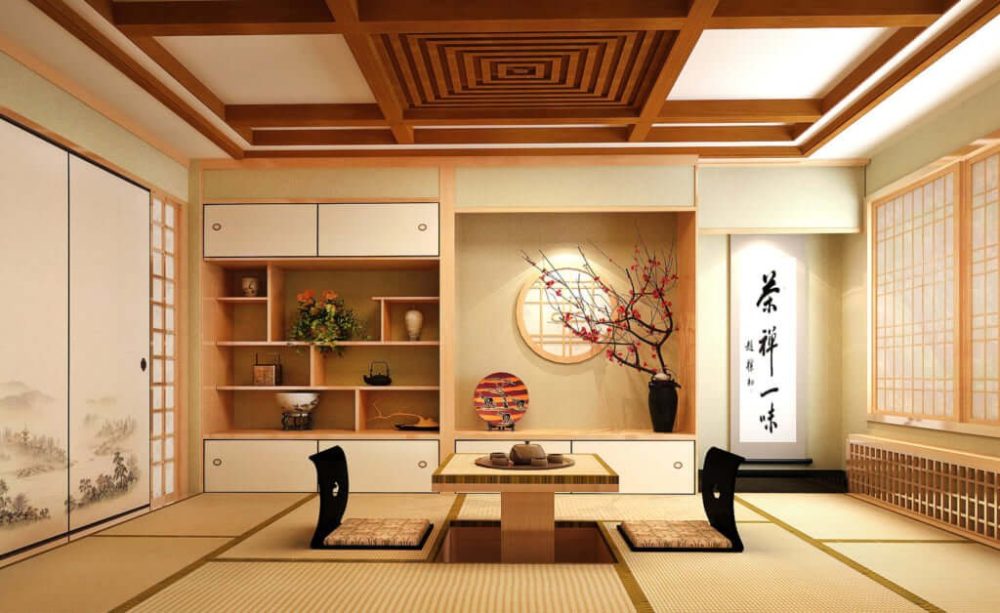
One of the central tenets of Japanese cinema-inspired minimalism is that every element in your interior should serve a purpose. By maximizing functionality, you not only create a space that is clutter-free but also one that is highly efficient and practical. Here are some strategies to ensure your minimalist interior is as functional as it is beautiful:
- Streamlined Storage: Invest in storage solutions that make the most of available space while maintaining a minimalist aesthetic. Look for built-in cabinets, hidden storage compartments, and wall-mounted shelves to keep items organized and out of sight.
- Furniture with Dual Purpose: Select furniture that serves multiple functions. For instance, a sofa bed can double as a guest bed, and a dining table with folding leaves can save space when not in use. Such versatile pieces are ideal for smaller homes.
- Open Floor Plan: If possible, consider an open floor plan. This design choice not only makes your space feel more spacious but also allows for flexibility in how you use it. Open areas promote a sense of flow and simplicity.
- Digital Organization: In a modern world, digital clutter can be just as overwhelming as physical clutter. Organize your digital life by managing files, emails, and apps efficiently. A well-organized digital space complements your minimalist interior.
- Feng Shui Principles: Consider the principles of feng shui in your interior layout. Proper placement of furniture and decor can enhance the flow of positive energy (chi) throughout your space. This can contribute to a sense of balance and harmony.
- Minimalist Workspace: If you work or study from home, create a minimalist workspace that is free from distractions. Keep only essential items on your desk, maintain an uncluttered work surface, and use simple, functional office furniture.
- Room for Movement: Ensure there is enough room for comfortable movement within your space. Avoid overcrowding with furniture or decor items. Adequate circulation space promotes a sense of ease and freedom.
- Simplicity in Everyday Objects: Everyday objects like dishes, utensils, and kitchen appliances should also reflect the minimalist philosophy. Choose items that are both functional and visually pleasing, adhering to a streamlined design.
- Purposeful Decor: Decorative items should contribute to the functionality of your space. Consider incorporating elements like mirrors to make rooms feel larger, or plants that improve air quality. These items not only beautify your space but also serve a purpose.
By prioritizing functionality, you can create a minimalist interior that is not only visually appealing but also highly practical. A clutter-free environment with thoughtful design and well-organized elements enhances your daily life, making it more efficient and serene. In the following section, we’ll explore ways to personalize your minimalist space while maintaining its simplicity.
Conclusion
In the pursuit of minimalist interior decor inspired by Japanese cinema, we’ve embarked on a journey of simplicity, serenity, and purpose. Through an exploration of the essence of minimalism in Japanese cinema, we’ve uncovered the beauty of decluttering, the benefits of serene spaces, and the significance of color palettes and materials. We’ve delved into the choices of furniture and decor that harmonize with the minimalist philosophy, and we’ve learned the art of maximizing functionality. As we conclude, it’s important to remember that minimalism is not just a design trend; it’s a way of life.
By adopting the principles of minimalism, you’re not merely transforming your living space; you’re embracing a mindful and intentional approach to life itself. You’re cultivating an environment that fosters calm, mindfulness, and inner peace, and you’re simplifying your surroundings to enhance the quality of your daily life. Inspired by the wisdom of Japanese cinema, your minimalist interior is now a canvas upon which you can paint your own unique experiences, creating a haven of tranquility that’s a reflection of your individuality and a testament to the beauty of simplicity. As you continue your minimalist journey, may your space be a sanctuary of peace, serenity, and the unspoken elegance of Japanese minimalism.

